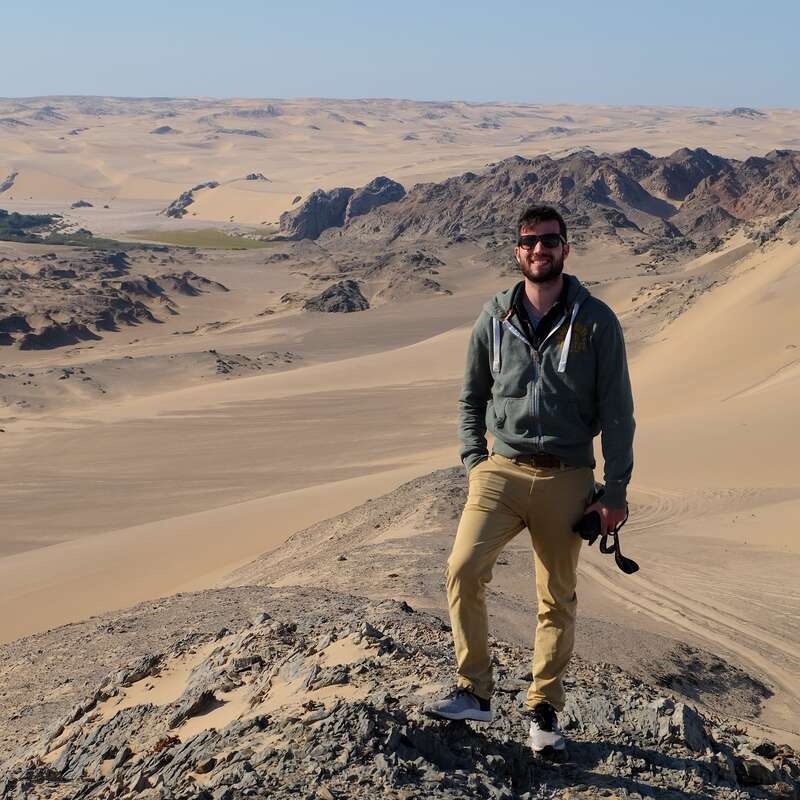About Chobe Game Lodge
Chobe Game Lodge is a well-established hotel in the bush.
Just a 40-minute drive from Kasane, it occupies a stunning position beside the Chobe River and is the only permanent lodge within the riverfront area of Botswana's Chobe National Park. The lodge was originally made famous by Elizabeth Taylor and Richard Burton, who chose to marry there in the mid-1970s, and has since been substantially upgraded.
Chobe Game Lodge has an enviable location inside the park. Although undeniably large, it is an excellent lodge and well run, where they strive to make guests feel welcome as individuals. Their new rooms are looking fantastic; a far cry from the outdated rooms of the past. The lodge’s attitudes are far from dated, too; we were impressed by its modern approach and pro-active efforts to reduce its environmental impact. But for us, it was the team that made it special – and, of course, the wildlife. Just be aware that the park gets busy, so expect to see other vehicles on game drives – and on the water.
Our view
Chobe Game Lodge has an enviable location inside the park. Although undeniably large, it is an excellent lodge and well run, where they strive to make guests feel welcome as individuals. Their new rooms are looking fantastic; a far cry from the outdated rooms of the past. The lodge’s attitudes are far from dated, too; we were impressed by its modern approach and pro-active efforts to reduce its environmental impact. But for us, it was the team that made it special – and, of course, the wildlife. Just be aware that the park gets busy, so expect to see other vehicles on game drives – and on the water.
Accommodation
42 rooms, 4 suites
Children
Best for aged 8+
Open
All year
Activities

4WD Safari

Birdwatching

Boat trip

Helicopter

Private activities
Traveller reviews of Chobe Game Lodge
15 real, un-edited reviews from Expert Africa's travellers.
Arrived 29 Dec 2024, 3 nights
"Chobe Game Lodge review"
Overall rating: Excellent
Arrived 8 Oct 2023, 3 nights
"Chobe Game Lodge review"
Overall rating: Poor
Arrived 6 Apr 2023, 3 nights
"Chobe Game Lodge review"
Overall rating: Excellent
Arrived 25 Oct 2022, 2 nights
"Chobe Game Lodge review"
Overall rating: Excellent
Arrived 28 Oct 2019, 3 nights
"Great introduction to Botswana"
Overall rating: Excellent
Arrived 26 Jun 2019, 2 nights
"Beautiful river setting"
Overall rating: Good
Arrived 22 May 2017, 3 nights
"Fancy accomodation and guaranteed animals"
Overall rating: Excellent
Arrived 11 Jun 2016, 2 nights
"MY BOTSWANA: CHOBE GAME LODGE"
Overall rating: Good
Arrived 22 Mar 2016, 2 nights
"Chobe Game Lodge"
Overall rating: Good
Arrived 22 Jun 2015, 3 nights
"Chobe Game Lodge review"
Overall rating: Good
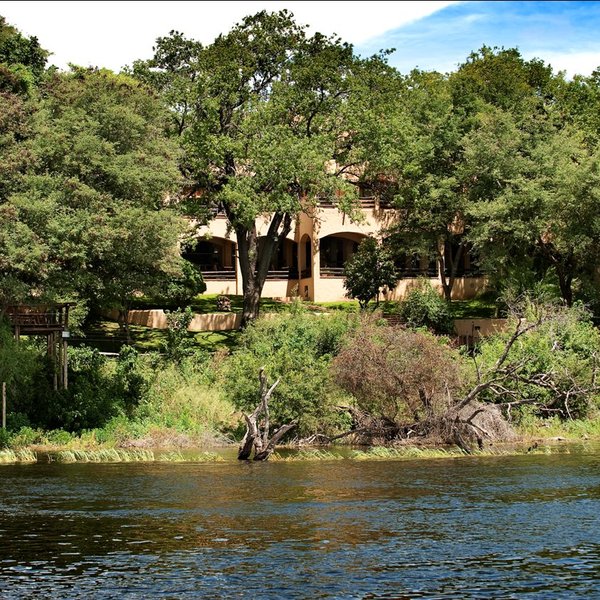
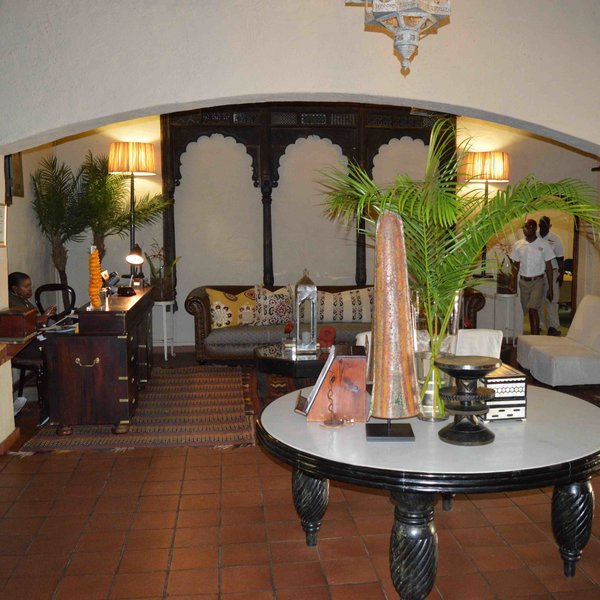
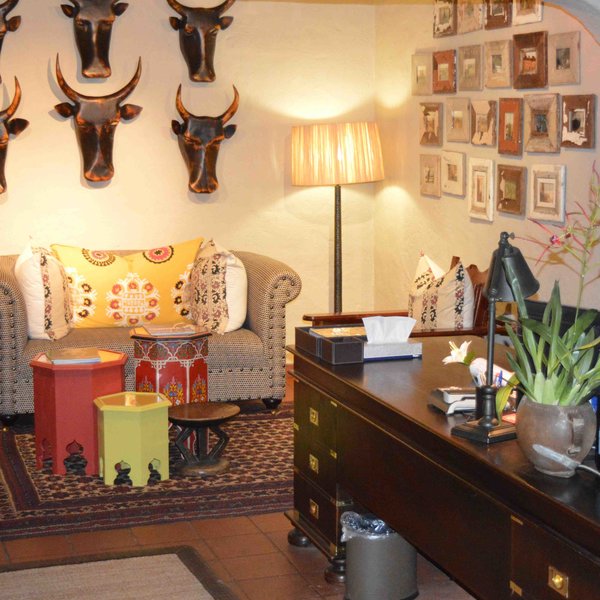
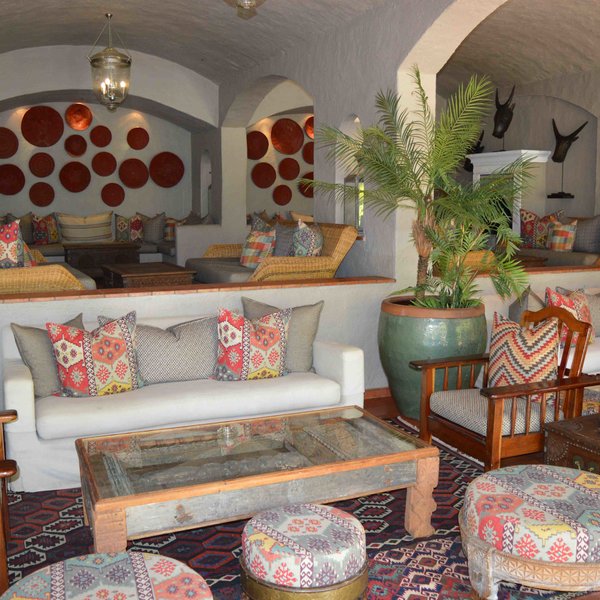
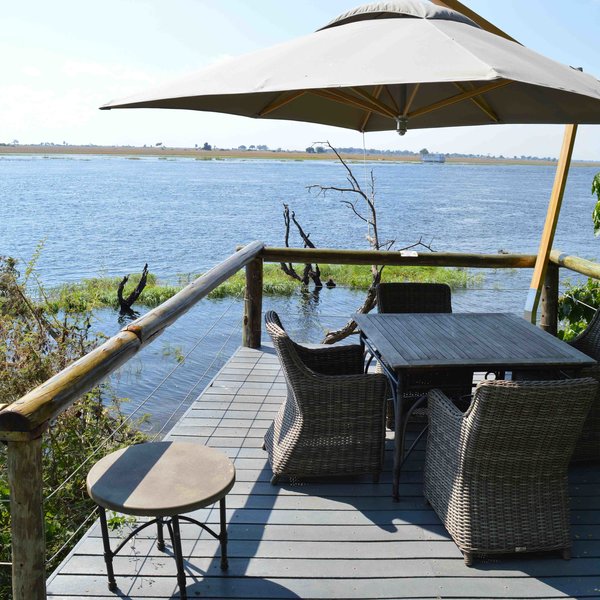
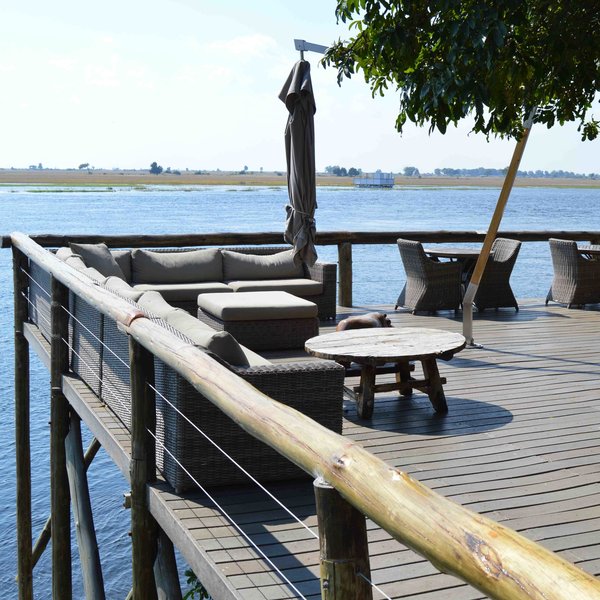
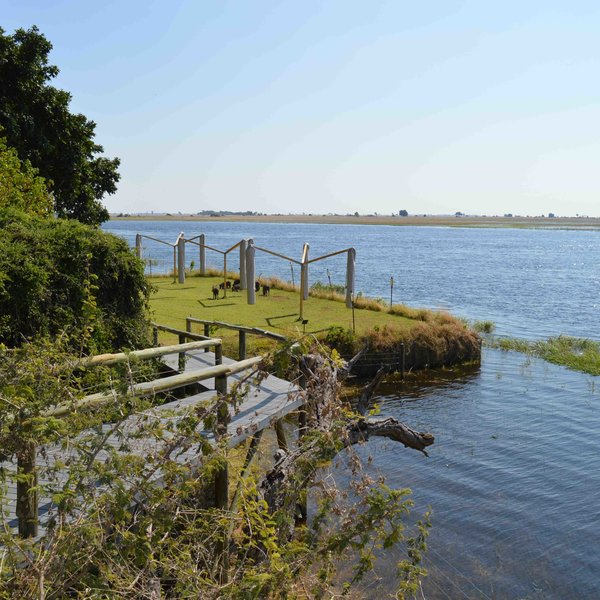
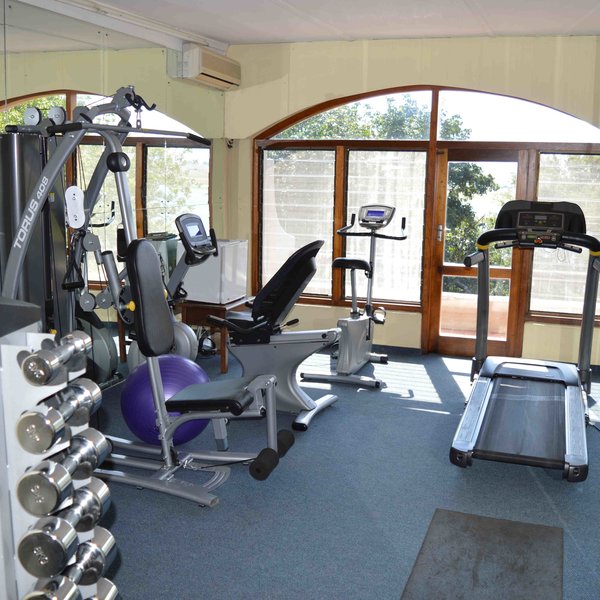
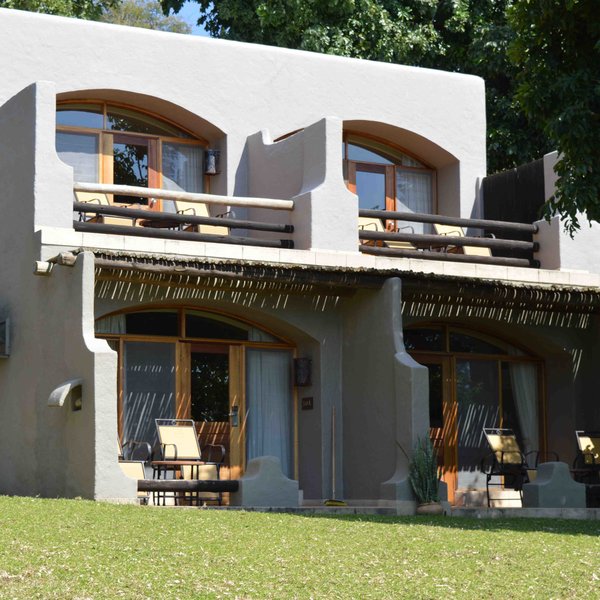
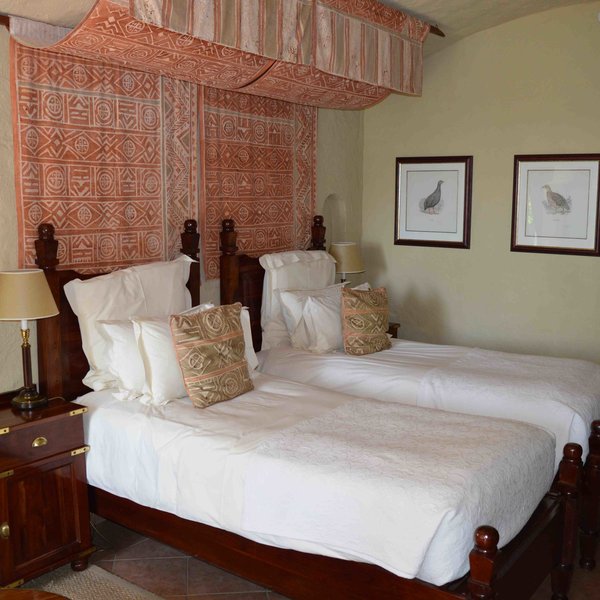
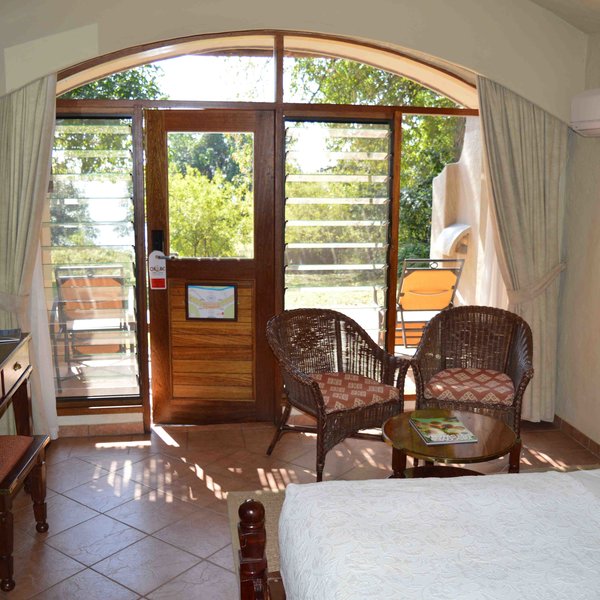
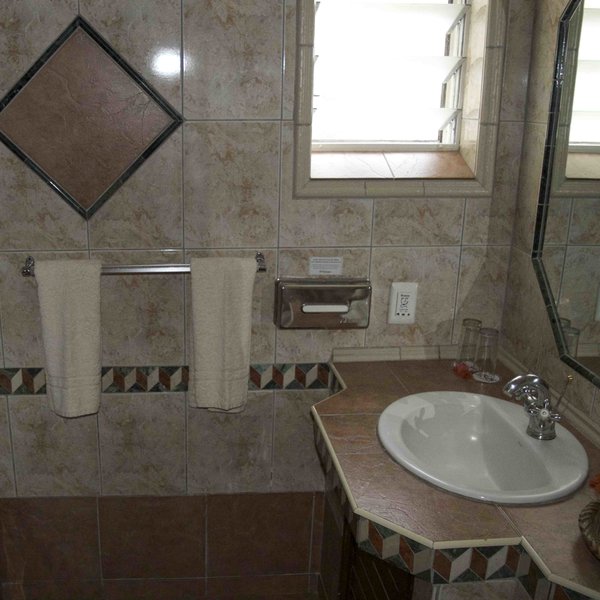
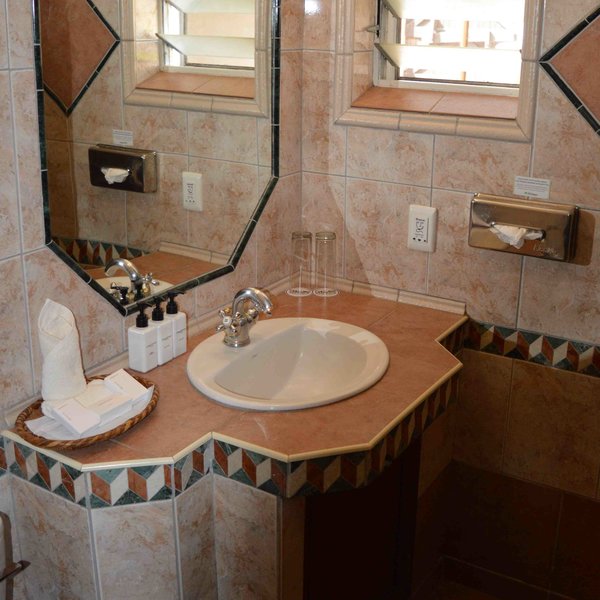
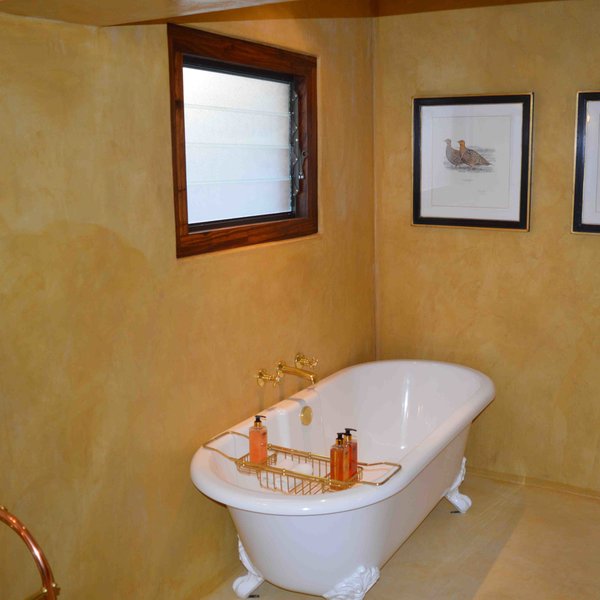
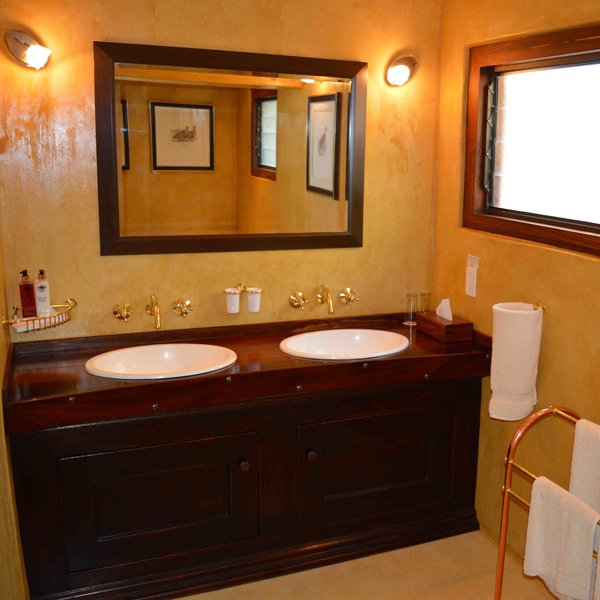

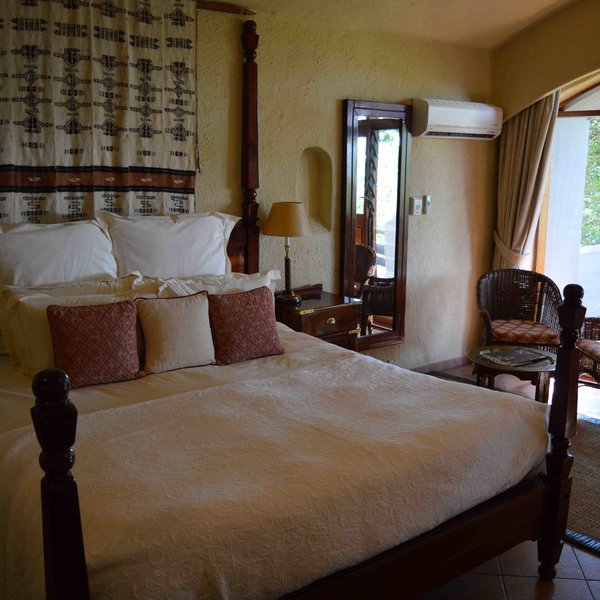
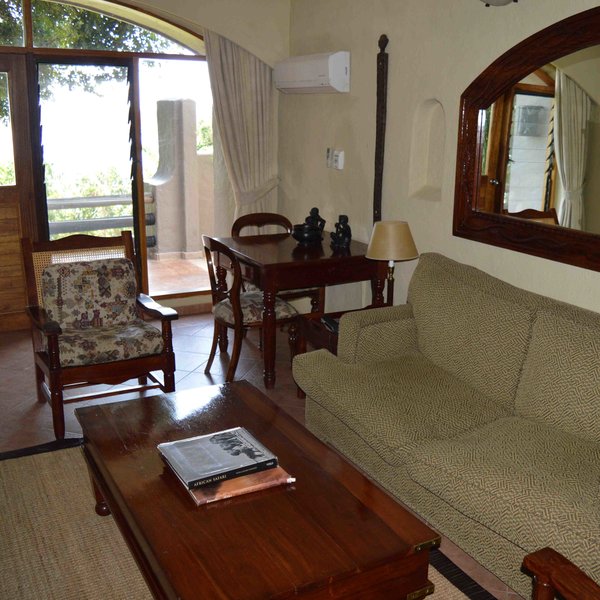
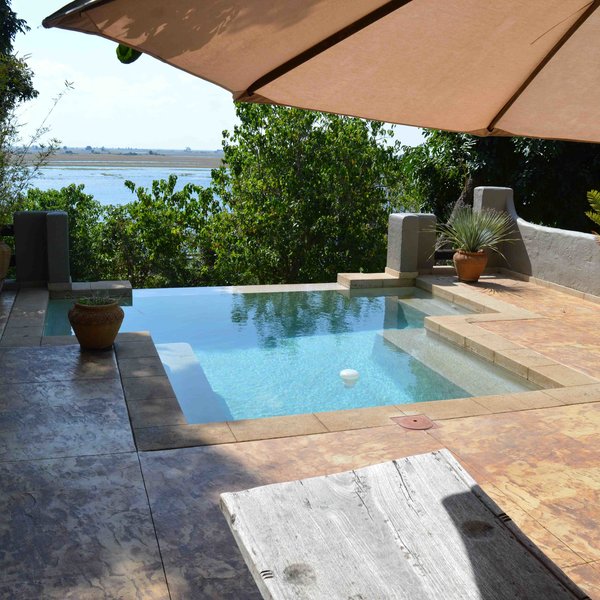
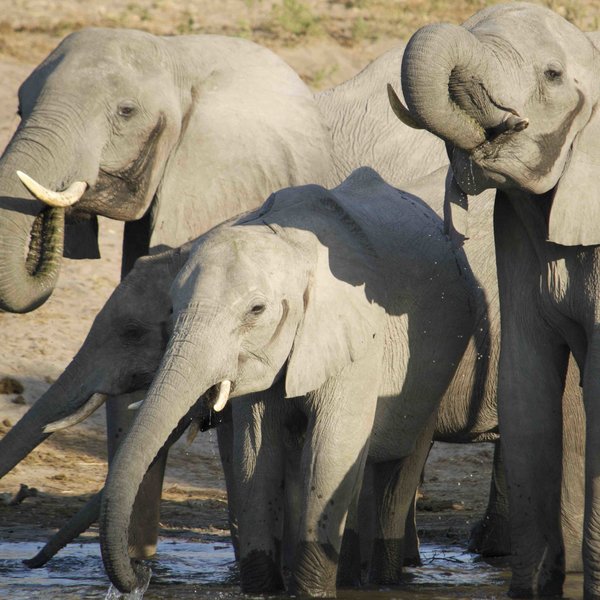
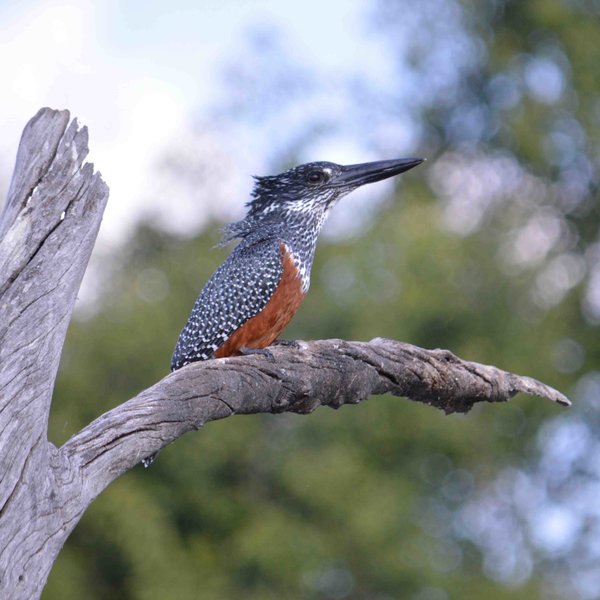
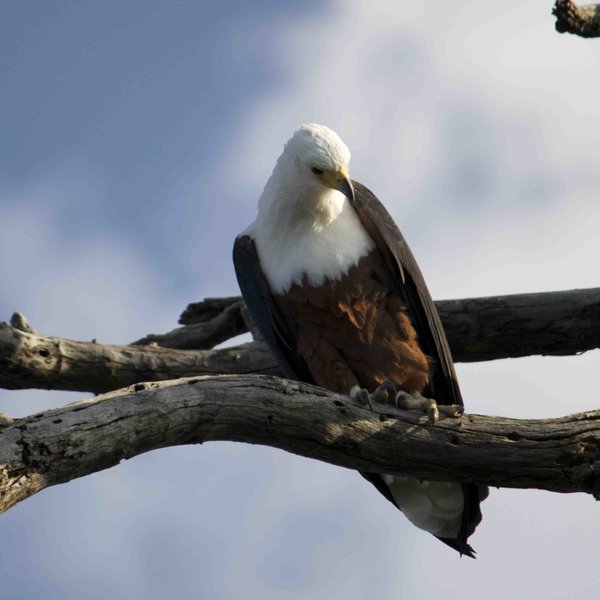
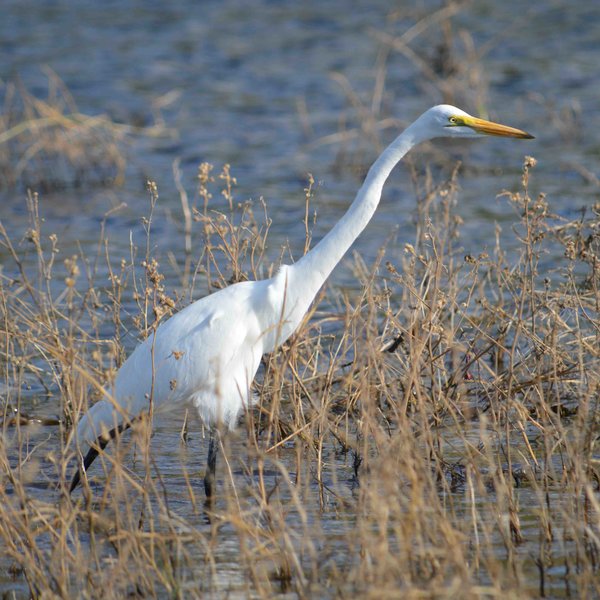
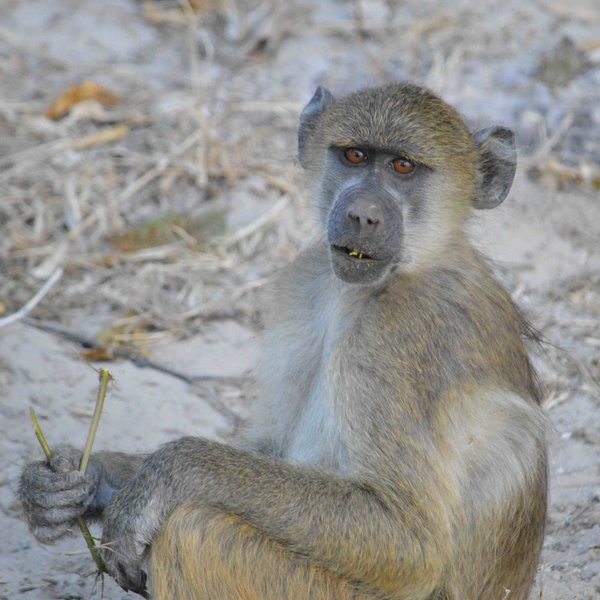
Expert Africa's gallery
When we travel we take lots of photos ourselves to give you a real and un-edited view of the safaris. See our 42 pictures and 1 videos of Chobe Game Lodge to get the candid view.
View galleryChobe Game Lodge: Our full report
Chobe Game Lodge is a well-established hotel in the bush.
Just a 40-minute drive from Kasane, it occupies a stunning position beside the Chobe River and is the only permanent lodge within the riverfront area of Botswana's Chobe National Park. The lodge was originally made famous by Elizabeth Taylor and Richard Burton, who chose to marry there in the mid-1970s, and has since been substantially upgraded.
The entrance to Chobe Game Lodge is a little imposing, much like a hotel, and perhaps unsurprising for a lodge of this size. But the welcome you will receive is quite the contrary – personal and intimate – and the staff strive to make their guests feel as though they belong.
This entrance lobby is home to the reception desk and a lounge, with a separate desk for the activities co-ordinator. Walk a little further, though, and you'll be greeted by glimpses of the Chobe River through the lush foliage in the gardens. You'll notice a distinctly Moroccan theme running through the décor in the public areas; it could feel a little out of place in Botswana but, oddly, we think it works.
Tiled stairs lead down to a very large lounge with several comfortable sitting areas, opening onto a terrace overlooking the landscaped garden. The Moroccan theme here is very distinct, in the fabrics, carved wooden tables, trunks, mirrors and ornaments, Persian carpets and lanterns.
The lodge has two bars. In the Linyanti bar, directly off the lounge, dark red walls and canvas draped from the ceiling are evocative of a Bedouin tent. It was a little too dark and pokey for our liking, but a good spot for a pre-dinner drink and tasty nibbles. Discreetly located above the dining area, the Tshwene bar feels more like a cigar lounge, with dark wood and leather chairs. It features a full-sized billiard table, a large-screen TV, and double doors onto a terrace with views over the Chobe River.
Chobe Game Lodge also has a small spa, a well-stocked curio shop, a swimming pool with a rock feature and small waterfall, and even a small, but reasonably well-equipped, air-conditioned gym.
The dining area is an open-sided terrace, with individual tables and the option of sitting under cover if the weather is inclement. Their purpose-built boma on the bank of the river, which makes the most of the riverfront views, hosts regular barbecues – weather permitting of course. The marimba band, who play regularly at these evenings, is very entertaining, if sometimes a little loud for those seated nearest to them!
Overlooking the river at the front of the lodge is a long boardwalk that incorporates strategically placed seating areas, making it a very pleasant place to observe the river and the wildlife it supports, perhaps with a drink in hand. Afternoon tea is often served here, and private dinners may be set up either on request, or as a surprise for guests celebrating a special occasion. The walkway looks and feels just like wood, but in keeping with the lodge's aim to restrict its environmental footprint, it is built entirely from recycled plastic!
Chobe Game Lodge's 46 rooms and suites face the river across manicured lawns grazed by warthogs, but the dense tree line means that not all rooms have views of the river.
- Each of the 42 standard rooms, some of which are inter-leading, opens out onto a small terrace with deckchairs. On our most recent visit in November 2015, the lodge was in the process of renovating and redecorating these rooms, with completion expected by July 2016. All guests will be staying in the new rooms! We stayed in two of the newly renovated rooms and were very impressed! The old terracotta-tiled floors have been taken out in favour of polished screed floors. Gone are the wicker furniture, dated beds and dull fabrics, to be replaced with soft armchairs, very comfortable beds, crisp white linen and bright throws and cushions, giving the rooms a far more contemporary feel. Facilities are what you would expect in a hotel – from air conditioning and a ceiling fan, to an internal telephone, a desk with international plug points and hairdryer, a full-length mirror, tea and coffee station, a large cupboard with plenty of hanging space and shelves, umbrellas, dressing gowns and slippers, an electric safe and a minibar with complimentary drinks.
Bathrooms in the new rooms have been extended by about two metres and completely redone. You’ll find a free-standing bath beneath an enormous mirror, twin basins beneath twin mirrors, a toilet (flushing of course) and a large walk-in shower. Complimentary Charlotte Rhys toiletries include soap, shampoo, conditioner, shower gel, body lotion, a vanity kit and a sewing kit. - Four suites, all with river views, are very similar in style to the rooms, but boast a separate lounge, and a large balcony with a plunge pool. Two of these suites have an inter-leading gateway, accessed from the terrace, which allows guests to occupy a suite and a standard room – a good set up for families with older children, or friends travelling together.
With its eco-credentials in mind, Chobe Game Lodge has embarked on a journey to be the first lodge in Africa to operate an entirely electric safari fleet. This was kick-started in November 2014 when they launched an eco-friendly safari, making use of a CO2 emission-free, silent electric 4WD game-drive vehicle (a converted Land Rover) and a silent electric safari skimmer boat – the first safari lodge in Africa to do so.
In a traditionally male-dominated industry, Chobe Game Lodge is also very proud of its professional and enthusiastic all-female guiding team – the ‘Chobe Angels’, headed by a resident environmentalist.
Activities at Chobe Game Lodge run a little differently from most safari camps in Botswana. An activity co-ordinator prepares a suggested itinerary for each guest in order to help them make the most of their time here – although nothing is set in stone and guests are very welcome to chat to the team if they have any requests or concerns.
While the day will usually start with a short early-morning game drive, guests may – depending on the season – come back to the lodge around 8.30–9.00am for breakfast, before heading out on a mid-morning boat cruise, when Chobe's wildlife tends to head to the riverfront.
Chobe Game Lodge has several pontoon motorboats for morning and sunset cruises, with seats that can be swivelled to the optimal position and direction for viewing wildlife. Boats are launched from a pontoon in front of the lodge, where there are far fewer boats than near Kasane, so we and our fellow guests more or less had this section of the river to ourselves.
Unusually, the lodge's game-drive vehicles have four rows of three, so that eight people have the chance of 'window' seats. It is worth noting, however, that at busy times there may be more passengers on the vehicle, so a window seat is not guaranteed.
The area around Chobe Game Lodge has a dense concentration of wildlife during the dry season, which gradually builds up between about June and October. That said, this is also when the 'Riverfront' area of Chobe National Park can be very busy, with the combined impact of a large number of lodges and hotels around Kasane, and an influx of visitors on day-trips to Chobe National Park from Victoria Falls and Livingstone. The lodge tries to limit the impact of this by conducting many of its activities in the quieter, western side of the park. Its location, several kilometres inside the park, also makes a real difference, as on morning game drives, they are able to reach prime wildlife areas much earlier than visitors staying outside the park, and on afternoon game drives they don’t have to rush back to exit the park gates before they close at sunset – though under park rules they still need to be back at the lodge by then.
During a previous stay, in September, we saw an incredible amount of wildlife, including large breeding herds of elephants in and out of the water, buffalo, giraffe, kudu – and a few enormous crocodiles. Our guide was very open to all of our questions, and we particularly enjoyed her gentle sense of humour. Our last stay, in November 2015, demonstrated the differences between the seasons in Chobe – while there were some good game sightings, we certainly didn't experience the enormous herds and prolific sightings that you'd normally find here during the dry season (between June and October).
Activities
4WD Safari
Birdwatching
Boat trip
Helicopter
Private activities
Families & children
- Attitude towards children
- Chobe Game Lodge welcomes children of all ages. However, families with children aged six years and younger will need to book private activities at additional cost.
- Equipment
- There are no special activities or services for children.
- Generally recommended for children
- We think this lodge would suit children with an interest in wildlife and nature – and the lodge is big enough for them to have space to explore.
- Notes
- Dangerous wildlife often moves through the grounds of the lodge. The pool is unfenced. Children must be under the constant supervision of their parents. The balconies belonging to rooms on the first floor at Chobe Game Lodge are not suitably enclosed for children under the age of 6 years. We strongly recommend families with young children only book ground floor rooms here.
Food & drink
- Usual board basis
- Full Board & Activities
- Food quality
- During various stays over the years, we have been offered a very good variety of food, and most dishes have been well-prepared and tasty.
Breakfast will vary depending on what time you’re heading out on your morning activity. If it’s an early game drive at around 5.00am you’ll find tea and coffee in the lounge, with either muffins or rusks, and some fruit. If you’re heading out a little later, then you’ll be met with a selection of cereals, yoghurt, fresh fruit, toast and muffins, as well as a cooked option, alongside fruit juices, tea and coffee – even cappucino!
During our stay in November 2015, lunch was a mixture of a buffet and an à la carte menu: pizza, a variety of salads (with the option to make up your own from individual ingredients), pasta dishes, various meat dishes, freshly baked breads, cheese platters, as well as a dessert buffet with mousses, ice cream, fresh fruit and chocolate fudge cake. From a selection of main dishes on the à la carte menu we had the lasagne that was delicious.
The lodge has a lovely large riverside boma area where, weather permitting, there is a regular buffet dinner, usually including local dishes like 'pap' and 'seswa', along with a choice of pork, steak, chicken and even lamb cooked on the barbecue. We had some rain and very strong wind during our most recent stay, so we ate in the dining room, where the buffet included plenty of food catering for taste buds from around the world. Fillet steak, pork ribs and chicken kebabs, cooked on an open grill, were served along with oxtail stew and chicken curry. The salad bar was enormous, with a selection of green salads, potato salad and individual bowls of lettuce, tomato, feta etc, and there were mussels, calamari and a selection of cooked vegetables too. Desserts included the option of fresh fruit, ice cream and chocolate mousse, with tea and coffee to round off our meal. - Dining style
- Individual Tables
- Dining locations
- Indoor and Outdoor Dining
- Further dining info, including room service
- Room service is available in the suites.
- Drinks included
- Bottled water, soft drinks, local beers and spirits and a limited selection of (usually) South African red and white wines are included. Champagne and imported wines and spirits will cost extra.
Each room is provided with glasses and bottled drinking water that is replenished daily.
Our travellers’ wildlife sightings from Chobe Game Lodge
Since mid-2018, many of our travellers who stayed at Chobe Game Lodge have kindly recorded their wildlife sightings and shared them with us. The results are below. Click an animal to see more, and here to see more on our methodology.

100% success

100% success

100% success

100% success

83% success

71% success

50% success

33% success

33% success

20% success

17% success

17% success

17% success

0% success

0% success

0% success

0% success

0% success
Getting there
- Location
- Chobe National Park, Botswana
- Ideal length of stay
- We recommend a stay of 2–3 nights, especially during the dry season (around June–October) when game densities are higher.
- Directions
- From Kasane Airport it is about a 25–30-minute road transfer to the lodge. Alternatively, it's about a 2½-hour transfer from either Victoria Falls or Livingstone, depending on the border crossing.
- Accessible by
- Fly-and-Transfer
Special interests
- Wildlife safaris
- The Chobe River is a magnet for elephant and buffalo during the dry season. From its location within Chobe National Park, Chobe Game Lodge offers the opportunity to steal a march on the crowds and to explore quiet sections of the river during a wildlife safari in Botswana.
- See ideas for Wildlife safaris in Botswana
Communications
- Power supply notes
- Mains with a generator back up.
- Communications
- Telephone, fax and email are available at Chobe Game Lodge. There is usually cellphone coverage, and WiFi is available throughout the lodge.
- TV & radio
- There is a television in the upstairs bar at Chobe Game Lodge.
- Water supply
- Mains
- Water supply notes
- All rooms have plumbed hot and cold running water for showers, and flushing toilets.
Health & safety
- Malarial protection recommended
- Yes
- Medical care
- The managers are usually first-aid trained and the nearest doctor is in Kasane, which is about 40 minutes’ drive away.
Balcony safety warning: The balconies belonging to rooms on the first floor at Chobe Game Lodge are not suitably enclosed for children under the age of 6 years. We strongly recommend families with young children only book ground floor rooms here. - Dangerous animals
- High Risk
- Security measures
- There is a telephone in each room to call reception if help is required. The rooms all have locks on the doors. Guests are not automatically escorted to their rooms at night as the site is well lit, but an escort can be provided on request.
- Fire safety
- There are fire detectors and fire hoses across the site. There is also a fire assembly diagram on the back of the door of each room.
Useful info
- Disabled access
- On Request
- Laundry facilities
- A full laundry service is included.
- Money
- There is a safe in each room. There are no currency exchange facilities.
MasterCard and Visa credit cards are accepted; Diners and Amex are not. Cash payments may be made in the form of South African rand, GB sterling, US dollars, euros and Botswana pula. - Accepted payment on location
- MasterCard and Visa credit cards are accepted; Diners and Amex are not. Cash payments may be made in the form of South African rand, GB sterling, US dollars, euros and Botswana pula.
Plan and book your trip with Expert Africa
All of our trips are tailor-made, so we'll always adapt them to suit you. Talk to an Expert and let us plan and arrange your perfect trip.

Talk to an Expert
Call or email us now! We’ll match you with the Specialist in our team who is best suited to help you. Then together we can start planning your trip.

Set up your itinerary
Based on our experience and your ideas, your specialist will create a detailed, costed itinerary. We’ll refine it together, until we have a trip that you’re perfectly happy with.

Prepare for your trip
The same Specialist will make the seamless arrangements for your trip, send you detailed travel documents, and be available to answer any questions before you depart.

Travel with peace of mind
After you set off, you’ll be cared for by our partners in Africa, most of whom have worked with Expert Africa for decades. And if you ever need us urgently, we’re available 24/7.

When you return
We love to learn about your trip, and so will always be grateful if you’ve the time to give feedback to your Specialist when you return.
Chobe Game Lodge's location
Look closer at the environment and surroundings of Chobe Game Lodge.
Excursions from Chobe Game Lodge
Optional extra day-trips and excursions possible whilst you're staying at Chobe Game Lodge. Talk to us: these are usually best arranged before you go.
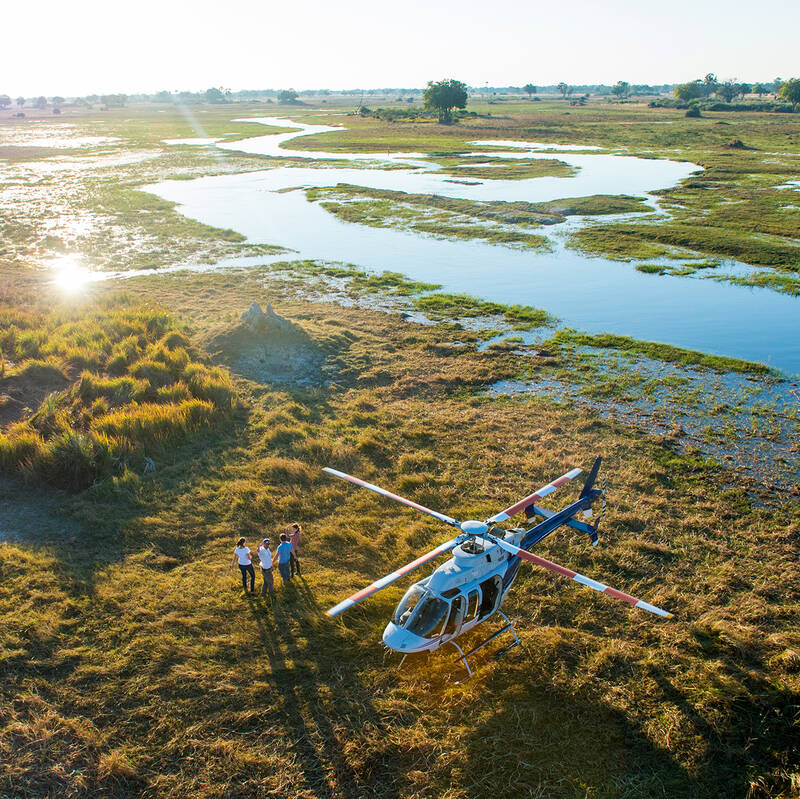
Helicopter Flight - Botswana
Various: from 30 minutes to half a day.
Low-flying, agile and offering superb views, helicopters are an ideal way to move around the Okavango Delta.You can use them instead of fixed-wing inter-lodge transfers or as an addition to other wildlife watching activities, and of course, helicopters can hover to allow that perfect pic, whereas fixed-wings can’t.
More about Helicopter FlightOther lodges in Chobe National Park
Alternative places to stay in this same area.
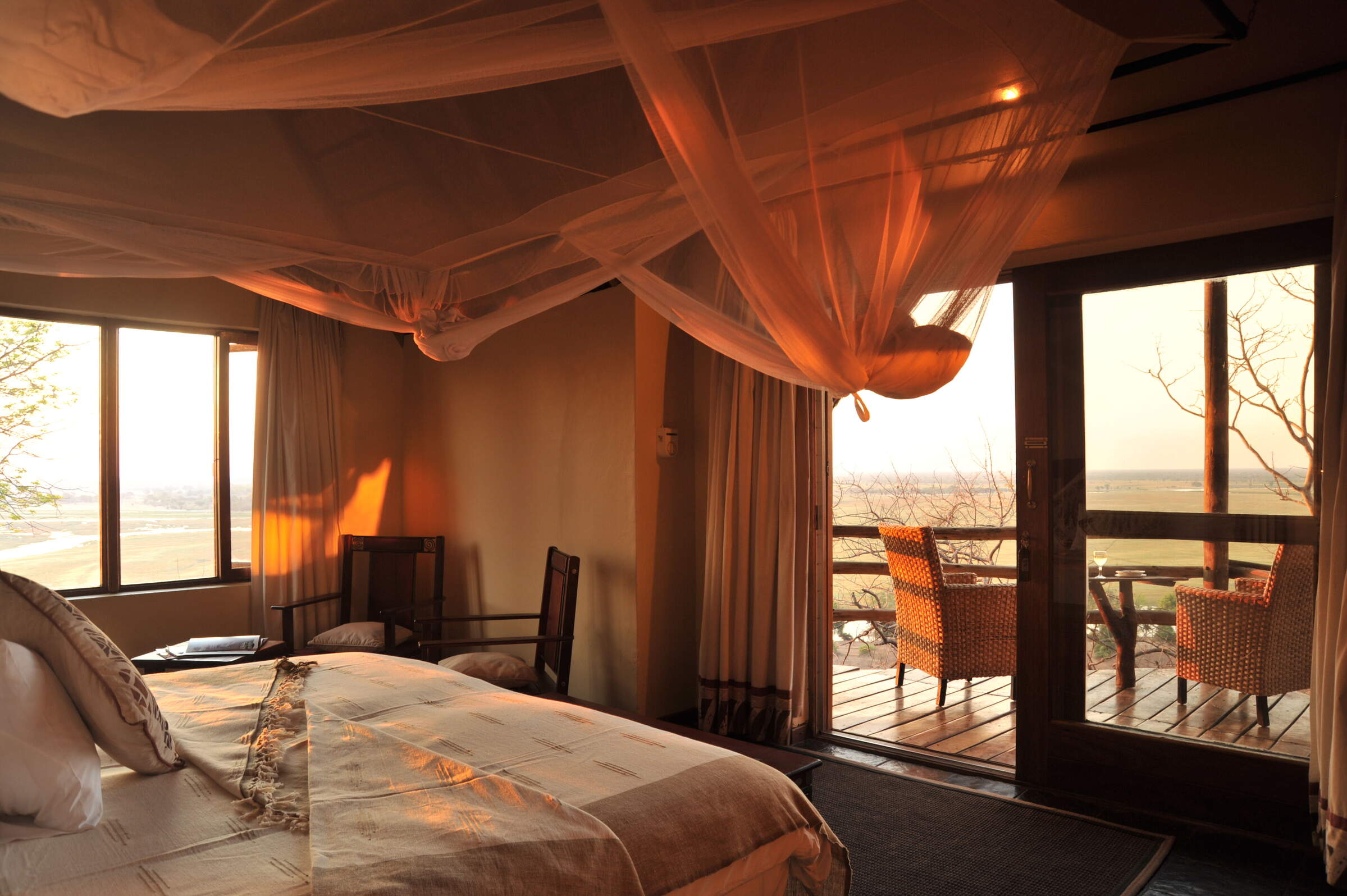
Muchenje Safari Lodge
One of our favourites in the area, Muchenje is a small, welcoming lodge at the quieter, western end of the Chobe Riverfront.
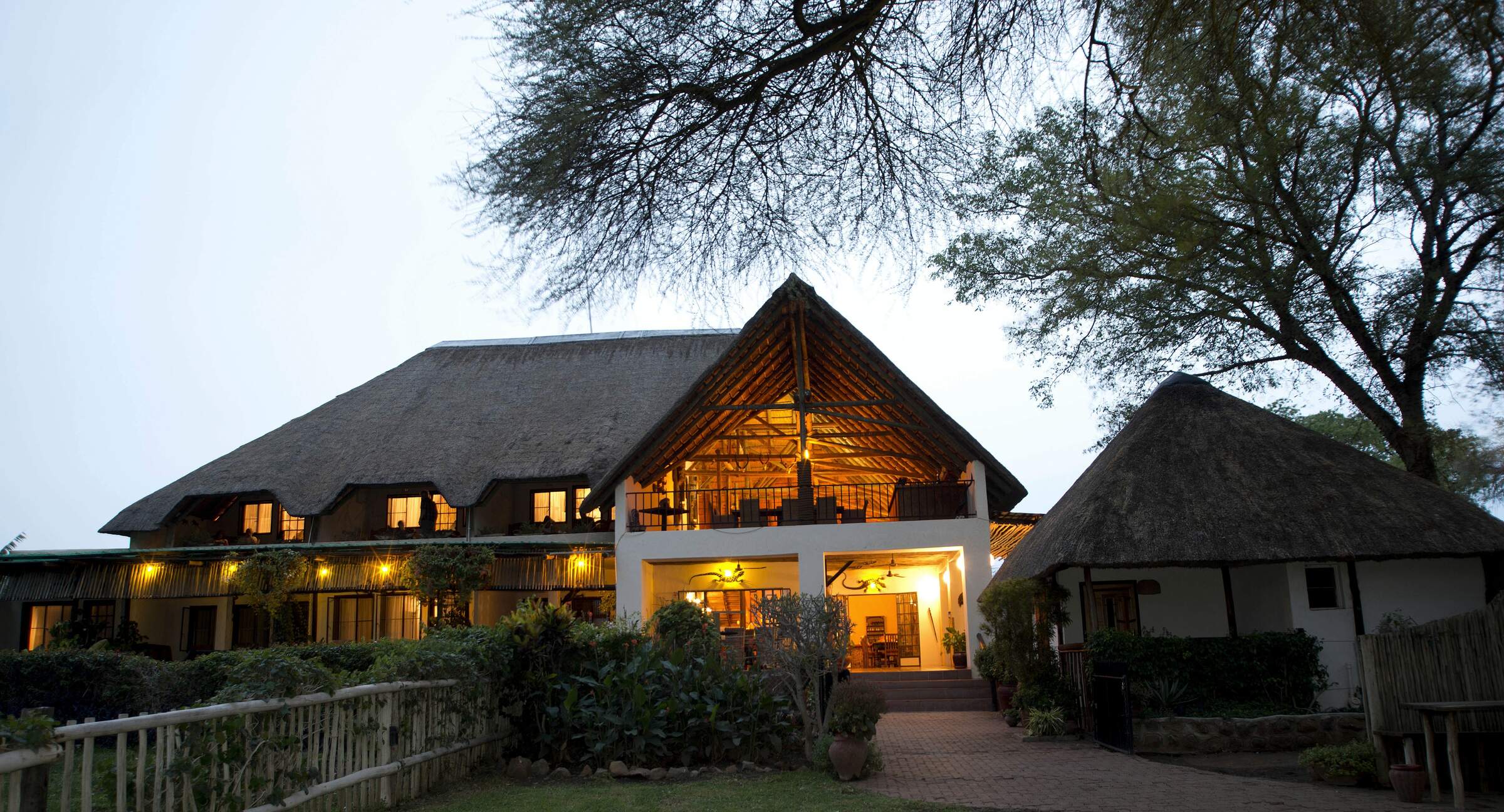
Chobe River Lodge
Overlooking the Chobe River, the intimate Chobe River Lodge is a haven of tranquillity away from the bustle of Kasane.
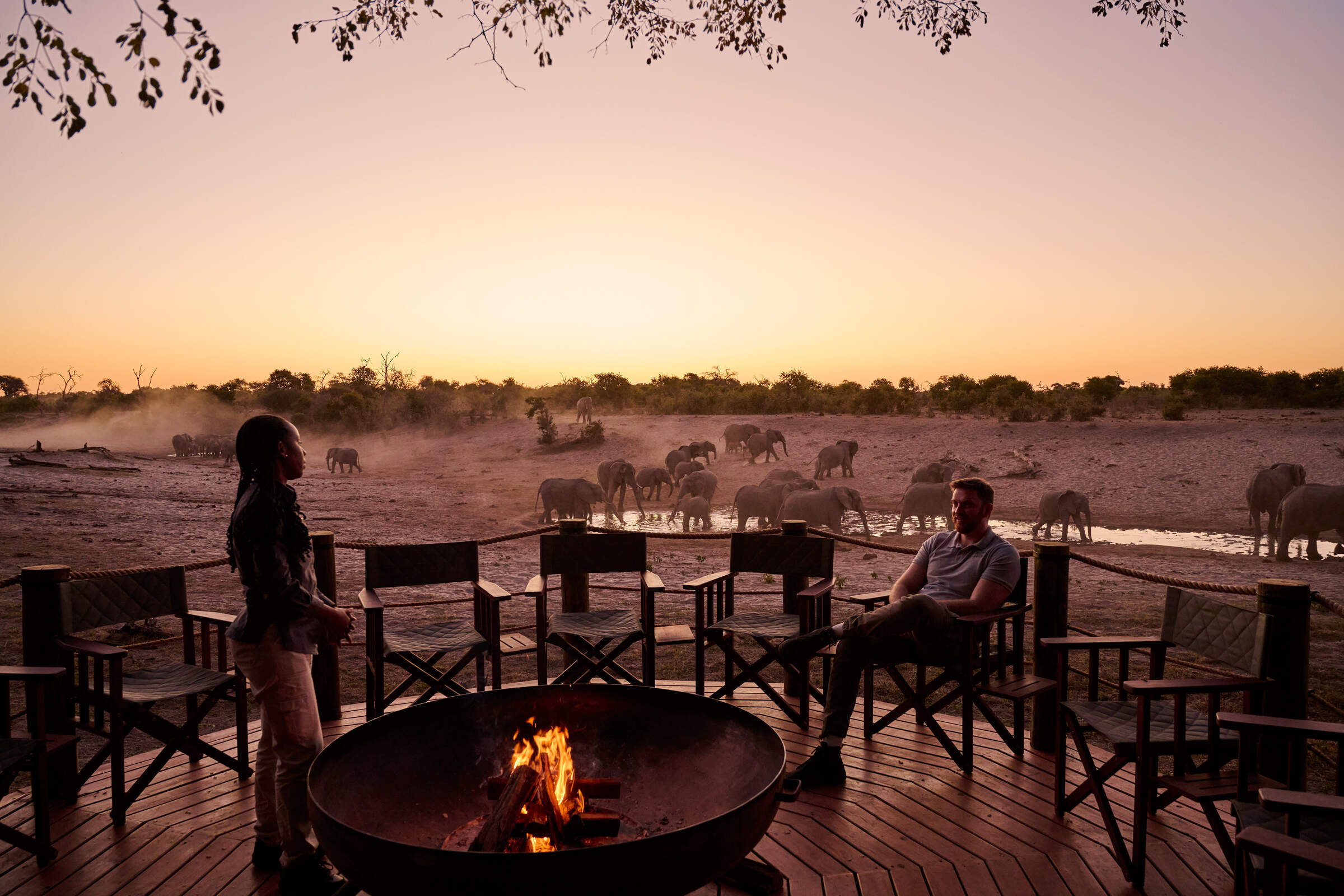
Savute Safari Lodge
Savute Safari Lodge sits on the banks of the Savuti Channel within Chobe National Park, and offers access to excellent game viewing, especially during the dry season.
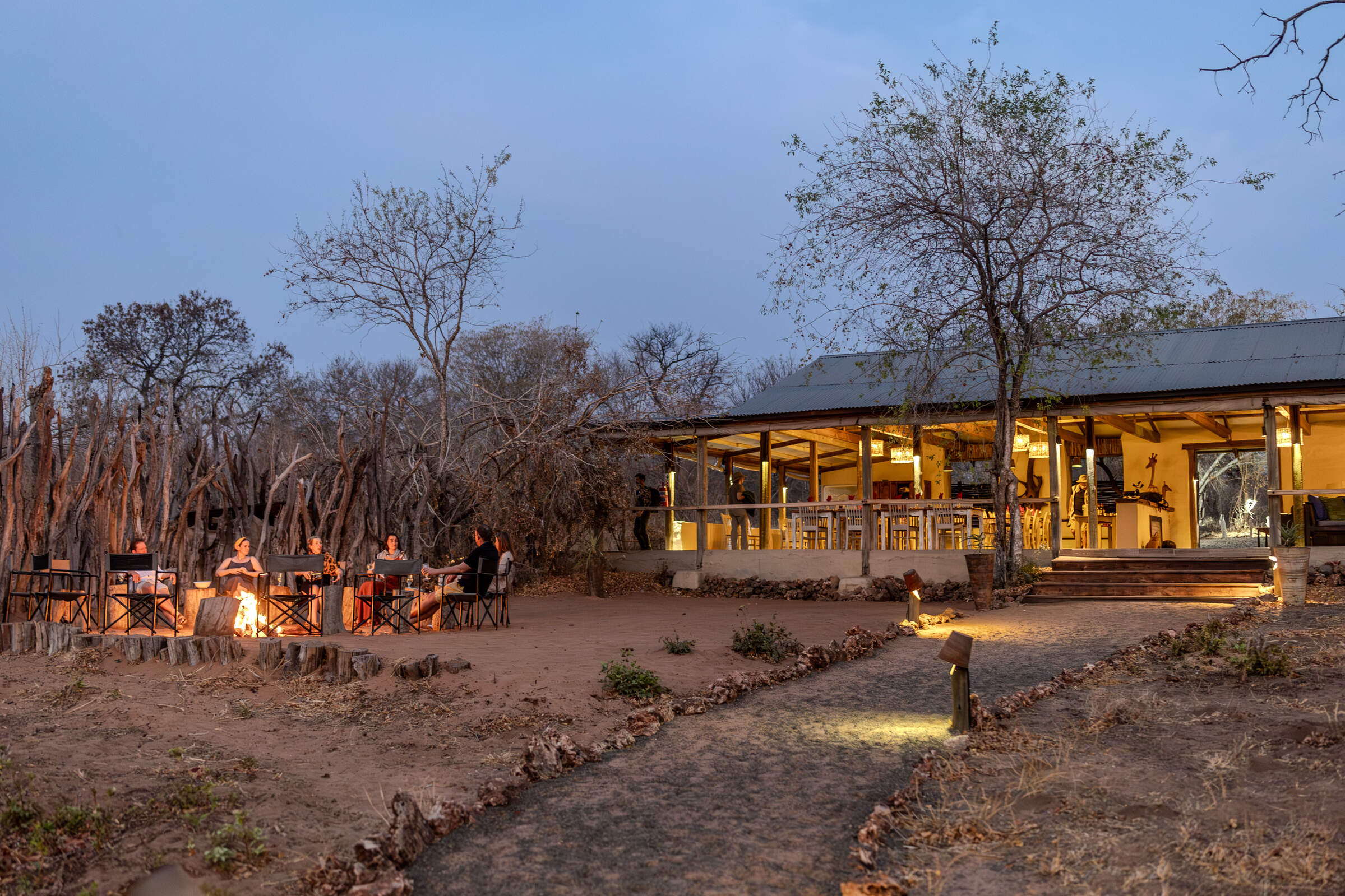
Chobe Elephant Camp
Located in one of our favorite areas of Chobe National Park, Chobe Elephant Camp is a simple but well-appointed camp with a strong bush feel.
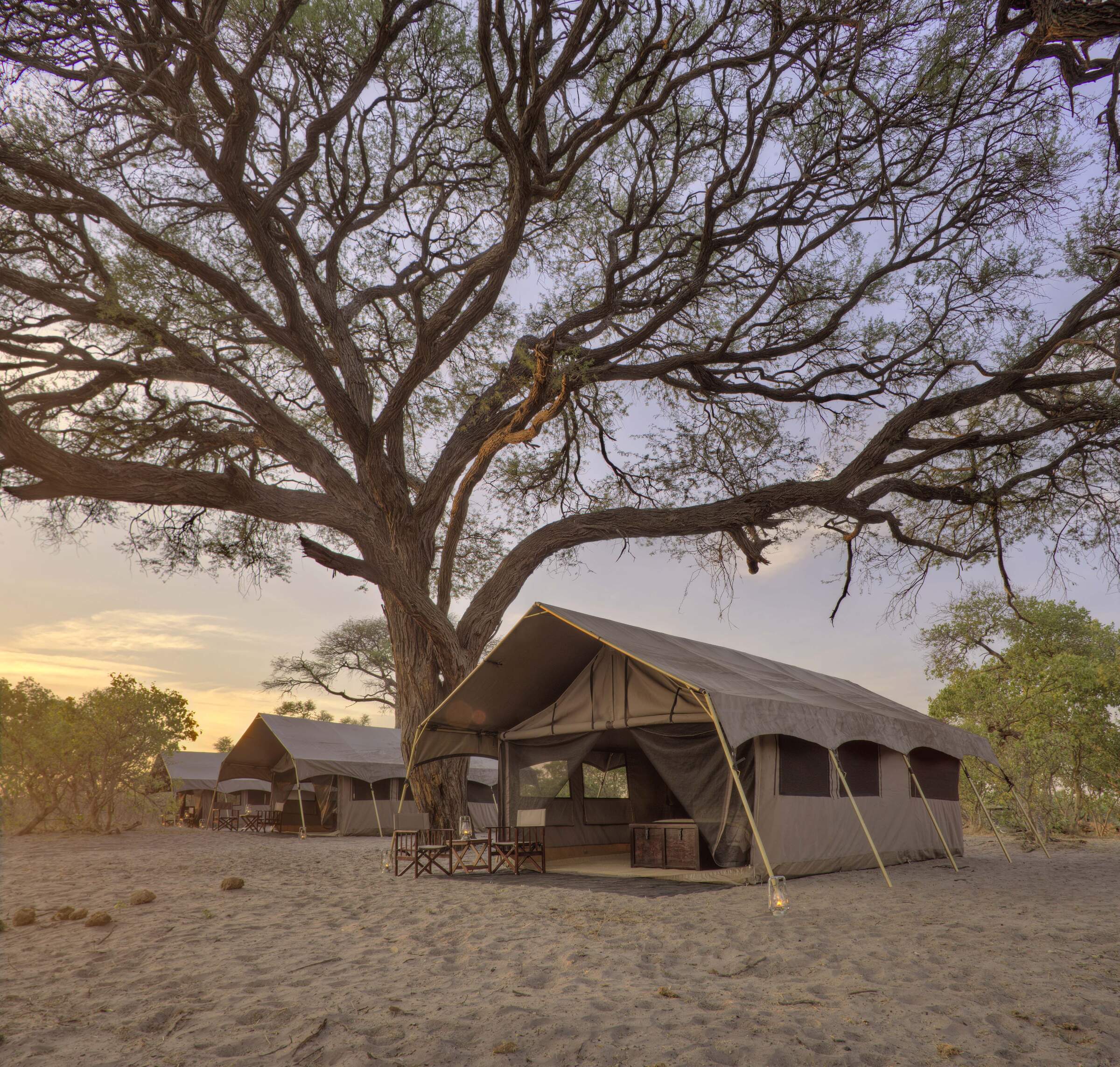
Savute Under Canvas
A mobile camp with the comforts of a semi-permanent tented camp, Savute Under Canvas offers guided game drives within the Savuti region of Chobe National Park.
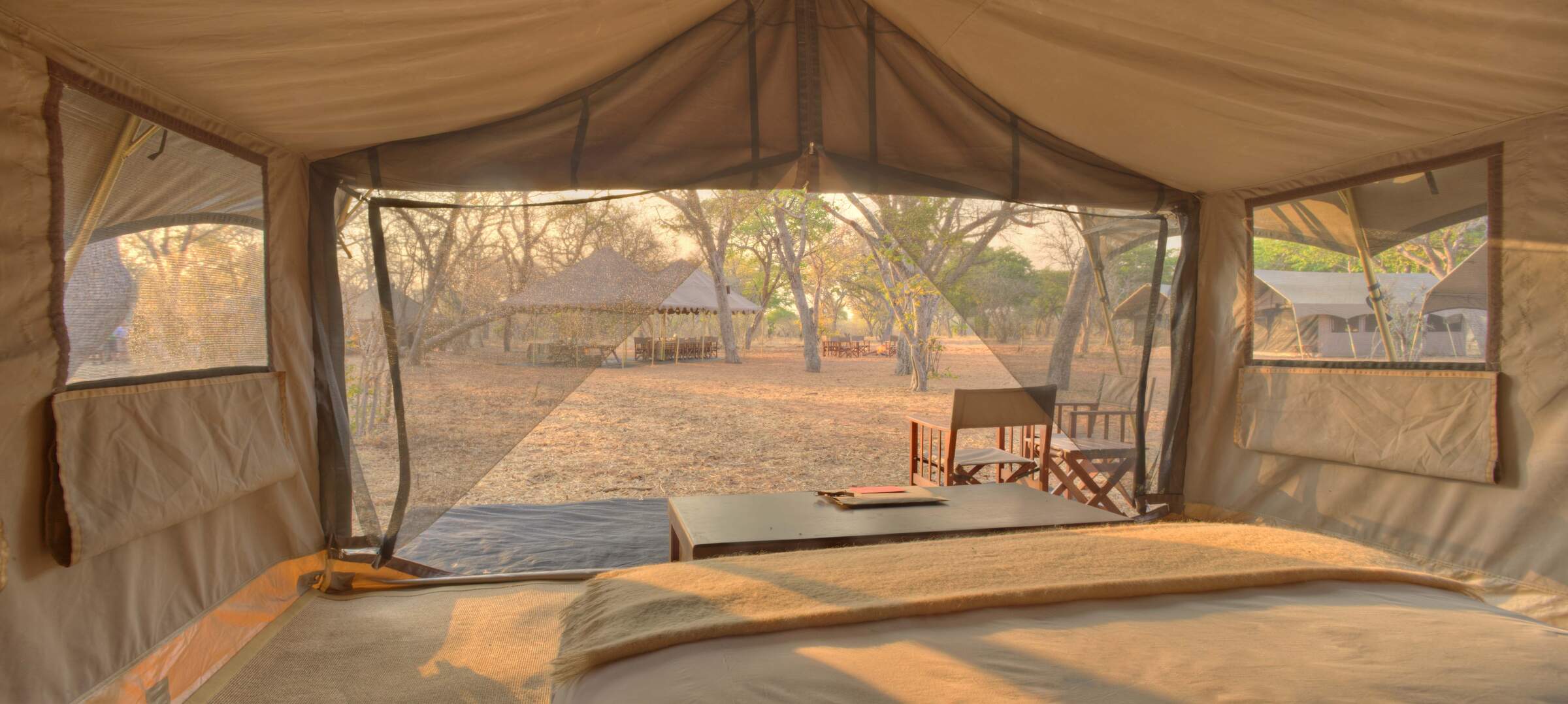
Chobe Under Canvas
This is a typical location for Chobe under Canvas, a small, semi-permanent camp in the Chobe Riverfront area that offers good value for money and high standards of care.
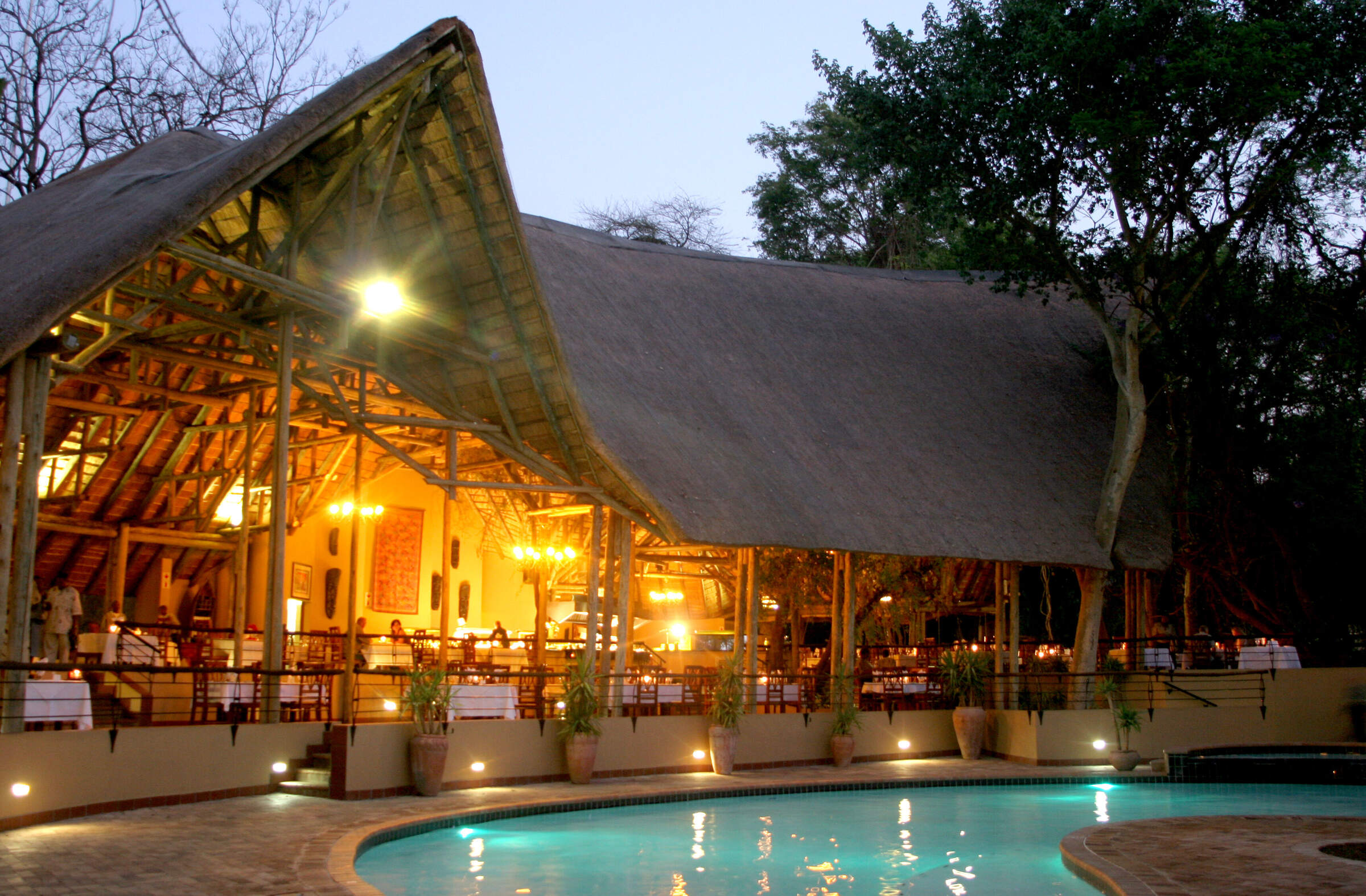
Chobe Safari Lodge
Chobe Safari Lodge is a good value, hotel-style lodge in the heart of Kasane offering game drives, boat cruises and fishing trips.
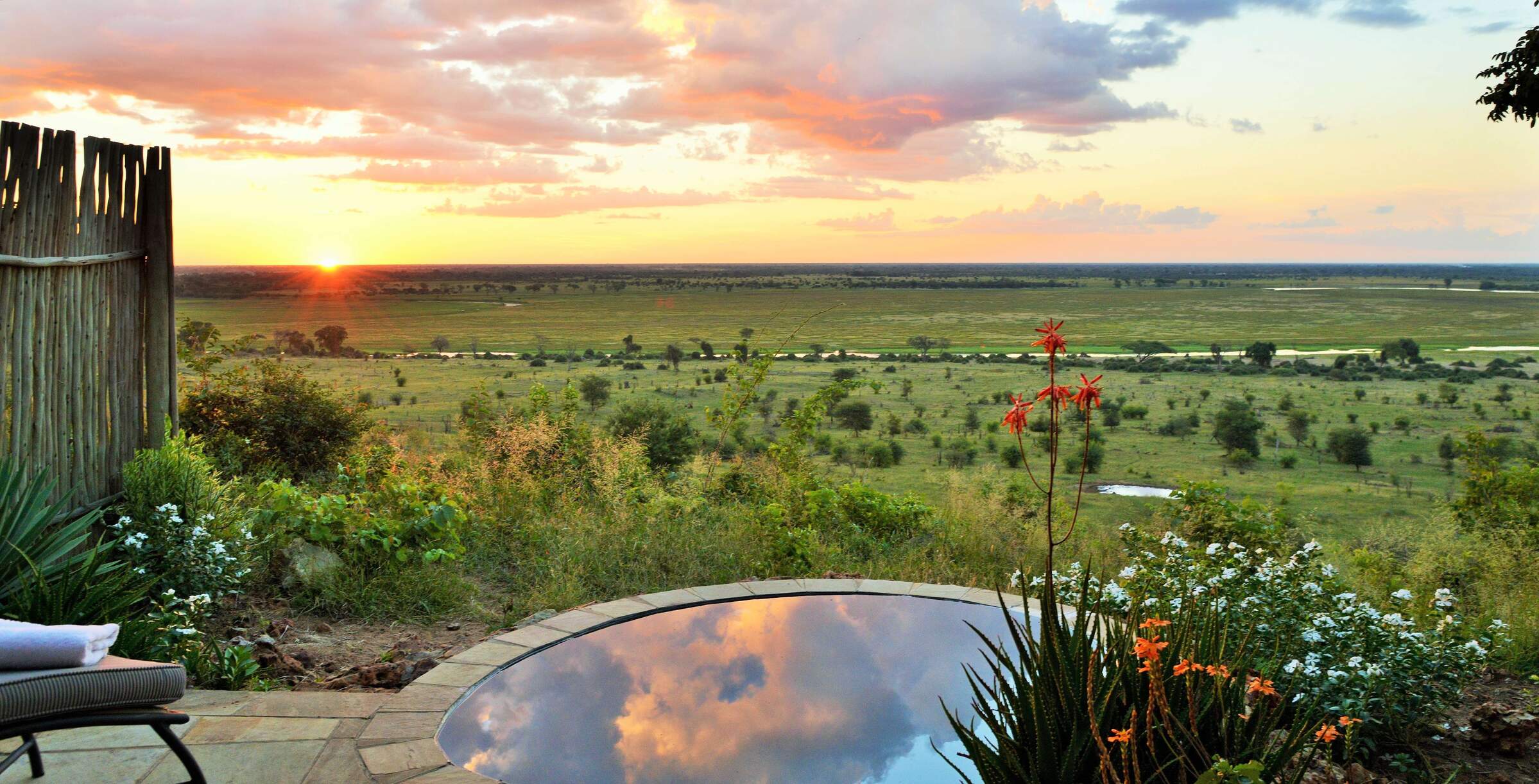
Ngoma Safari Lodge
With sweeping views across the floodplains of the Chobe River, Ngoma offers superb food and flexible safari activities.
Closed for refurbishment 5 Jan - 28 March 2026
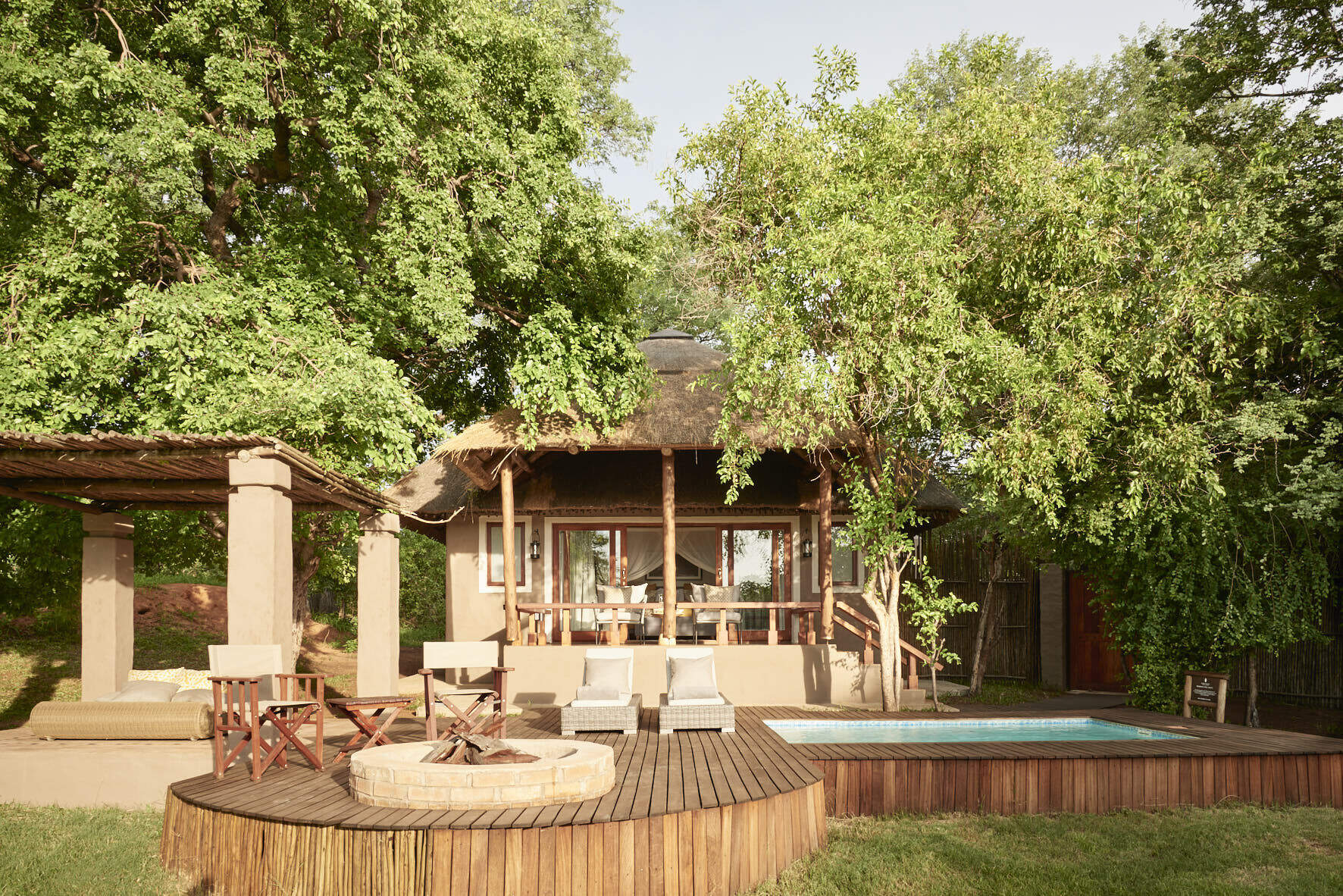
Chobe Chilwero
On the periphery of Chobe National Park, Chobe Chilwero offers luxurious surroundings and excellent food, which complement superb game viewing on game drives and boat trips.
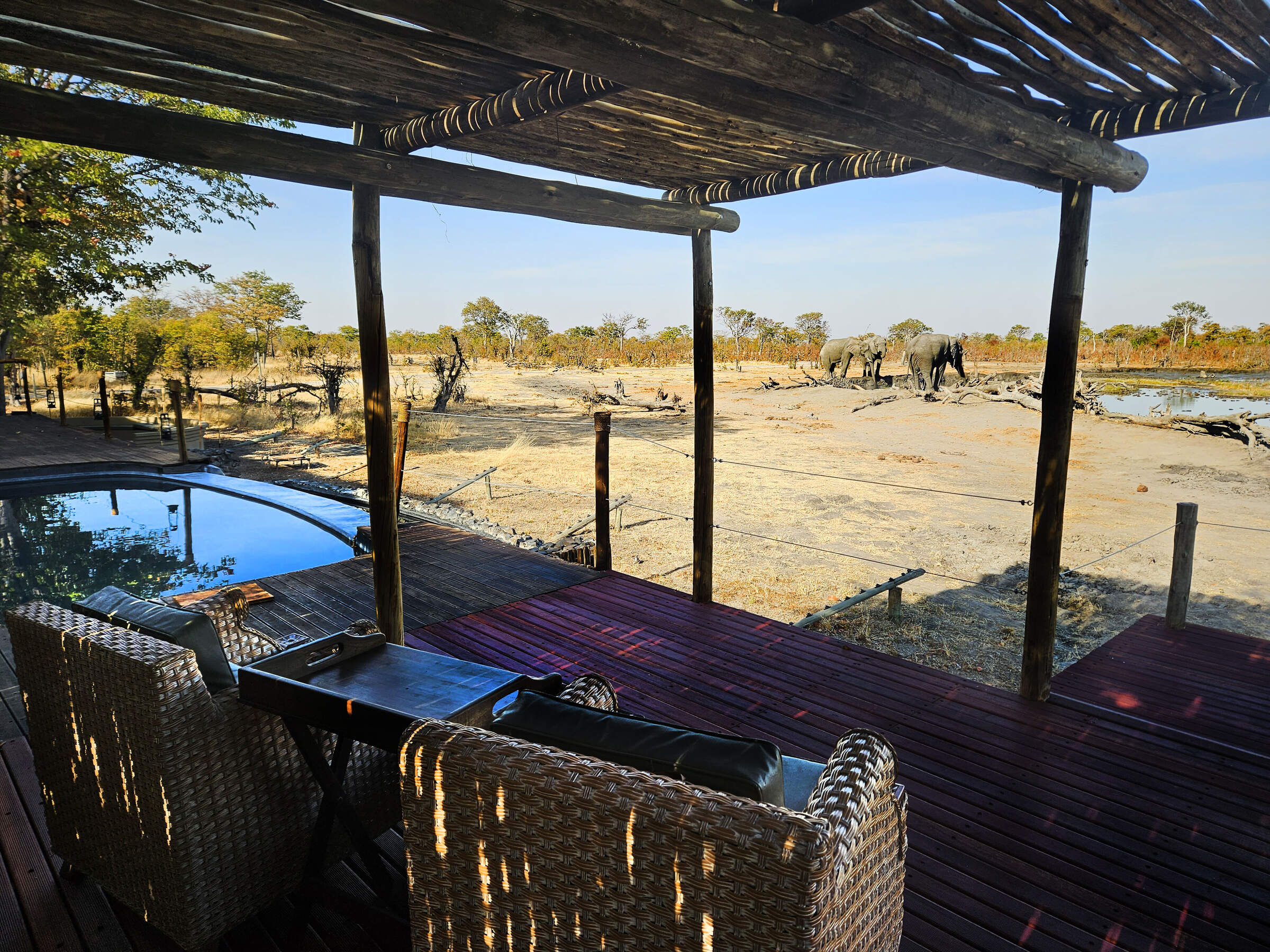
Camp Kuzuma
Camp Kuzuma sits in the Kazuma Forest Reserve and is an excellent place to see elephant in particular. Away from the busier riverfront area of Chobe National Park this camp offers a luxurious base form which to explore this less visited region of northern Botswana.
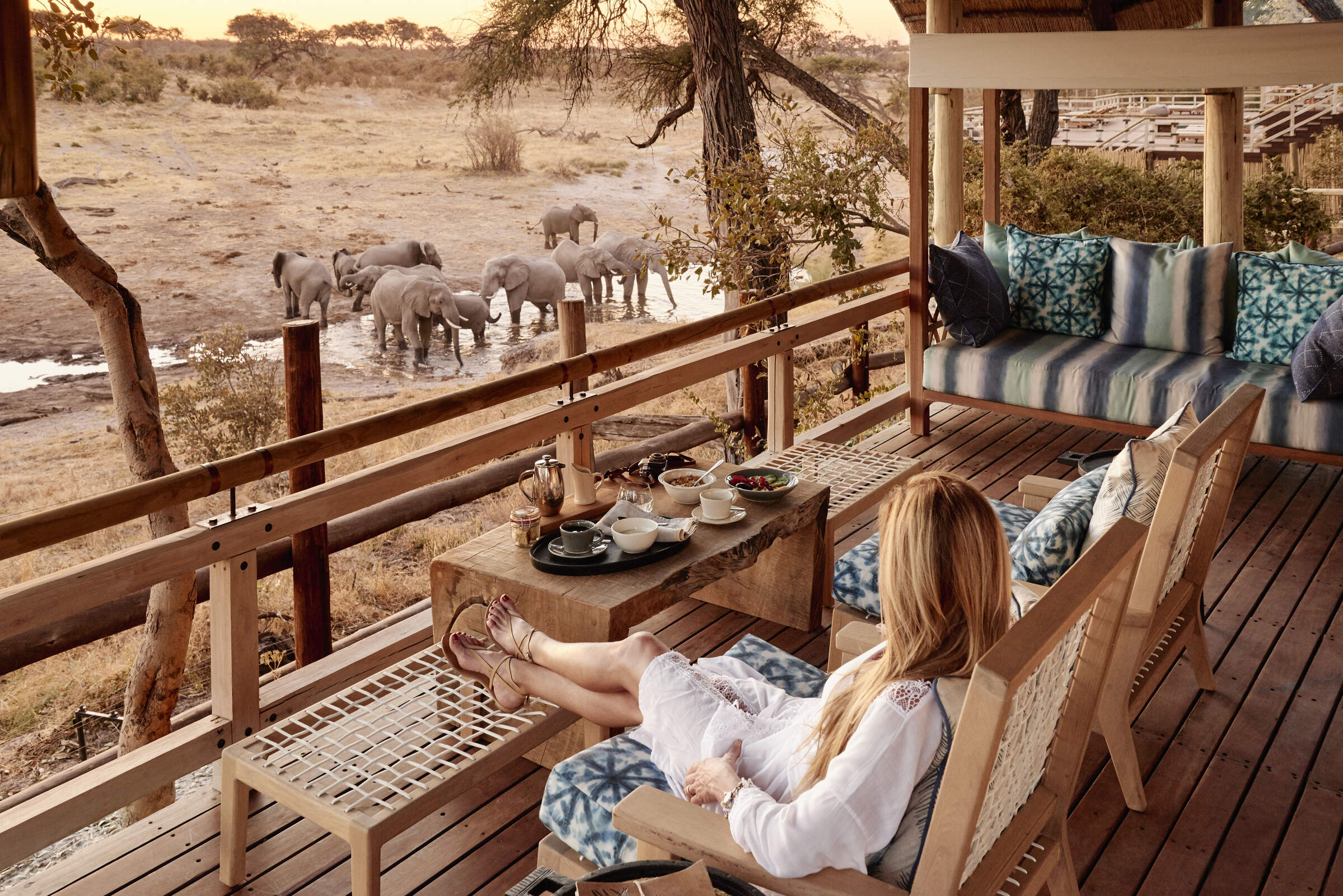
Savute Elephant Lodge
Savute Elephant Lodge is a luxurious camp on the banks of the now flowing Savuti Channel. This is a classic big-game area, although its location within Chobe National Park does limit the activities which are possible here.
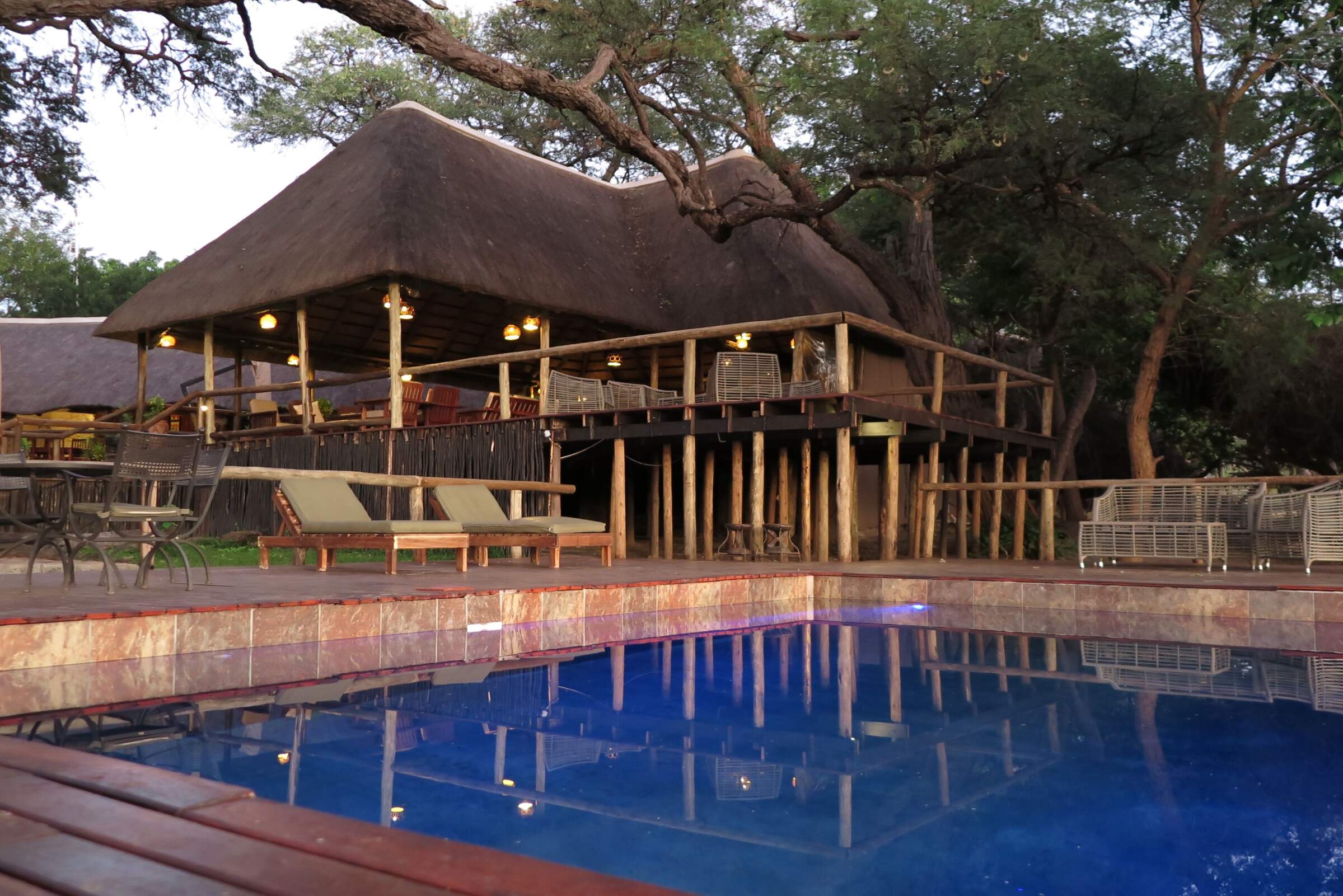
Elephant Valley Lodge
Elephant Valley Lodge is a lovely camp in a beautiful setting – sit in its hide and watch the wildlife come to drink at the waterhole. Activities focus on boating and drives in Chobe which - although very busy, and a long drive from the lodge – is very rich in wildlife.
When to go to Chobe National Park
Our month by month guide: What it's like to visit Chobe Game Lodge in Chobe National Park
Jan
Feb
Mar
Apr
May
Jun
Jul
Aug
Sep
Oct
Nov
Dec
Chobe National Park in January
January marks the peak of the rainy season in Chobe National Park. Evening rains are typically brief but heavy, often accompanied by thunderstorms. While temperatures remain high, they are slightly cooler compared to earlier months. Wildlife tends to be more dispersed, making it harder to spot animals. Big game densities near the Chobe Riverfront are relatively low, but some resident species, like giraffes, are accustomed to vehicles and can appear so relaxed that they seem almost tame.
The Savuti Marsh becomes lush and green, attracting herbivores. Migratory birds abound throughout the park, with the Linyanti Marsh being particularly rich in birdlife during this period. January is an excellent time for visitors interested in lush landscapes and diverse birdlife. Lower rates at many lodges make this a good time to visit on a more moderate budget.
- Warm temperatures with occasional thunderstorms
- Birdlife at its most spectacular in Chobe
- Big game dispersed across the park
- Seek most wildlife away from the river
- Good availability and rates in Chobe’s lodges and camps
Our view
A good time to visit, with pros & cons
Weather in January
Chobe National Park in February
February in Chobe National Park is similar to January, with heavy rains most days, often towards evening. The landscape is green and alive, with insects and smaller animals more easily seen. Many birds and animals are raising their young, especially in the Linyanti and Savuti areas, making for lovely family group sightings. The Chobe River swells, creating a spectacular landscape and attracting diverse wildlife. However, the rains create pools and waterholes in the bush, which combined with thicker vegetation makes it harder to spot larger animals.
The Chobe Riverfront area still offers a good wildlife experience as although much big game has moved away, the animals that remain are often more relaxed. Boat cruises on the Chobe River provide excellent opportunities to observe wildlife from a different perspective. Visitor numbers remain low, with good rates and more availability in camps and lodges.
- Warm with occasional thunderstorms in Chobe
- Vegetation running riot; smaller wildlife thriving
- Many animals with young in the park
- Big game dispersed throughout Chobe
- Low visitor numbers, good camp availability
Our view
This is not a great time to visit
Weather in February
Chobe National Park in March
March typically marks the end of the main rainy season in Chobe National Park, with showers gradually tapering off. Many days are characterised by clear skies, intense sunshine, and rising temperatures. Short afternoon thunderstorms may still occur, while the park's landscape remains lush and vibrant. During this time, many birds and animals complete the process of raising their young. The Savuti Marsh area becomes particularly fascinating as predators exploit the vulnerability of the young and weaker prey.
The Chobe River levels start to stabilise, offering excellent boat safari opportunities. March can also be a good time to explore the Linyanti area, where many animals congregate as other water sources begin to dry up. With fewer visitors in most areas, rates are still be relatively low at lodges and safari camps.
- Variable weather, rains tailing off in Chobe
- Occasional small thunderstorms in the park
- Many animals finish raising young in Chobe
- Birdlife still spectacular along Chobe River
- Few tourists, often lower rates in lodges
Our view
A good time to visit, with pros & cons
Weather in March
Chobe National Park in April
During April, rains in Chobe National Park have usually stopped, though there may still be the odd afternoon downpour. This results in clear skies and a lovely green, lush landscape. Night-time temperatures start to drop, and are especially noticeable in the Savuti area. The Chobe Riverfront begins to flourish at this time, with the numbers of elephants and other wildlife gradually increasing along the river.
The Savuti region is a particular favourite during this time, with good predator-prey interactions on display. April marks the beginning of the shoulder season for many camps, so rates are on the rise but still relatively moderate. This is an excellent time for photographic safaris, as the air is clear and the landscape still green.
- Cooler evenings, occasional showers in Chobe
- Northern Chobe lush and green
- Good predator-prey interaction observable
- Savuti area best for wildlife viewing
- Popular shoulder season, relatively low rates
Our view
A good time to visit, with pros & cons
Weather in April
Chobe National Park in May
May is a very popular month to visit Chobe National Park, often the last month of the shoulder season before camp rates hit their peak. While there is very little chance of rain, the annual floods from Angola start to make their way through the northern part of the park. With cooler temperatures in the morning and evening, predator activity tends to be higher, especially in the Savuti and Linyanti areas.
The Chobe Riverfront becomes busier with wildlife as water dries up elsewhere, making it an excellent time for boat cruises on the Chobe River, where close encounters with elephants and other wildlife are a real treat. Away from the water, game drives in the park's interior become more rewarding as vegetation thins out and sightings improve. May is a favourite time for many visitors, and camp bookings throughout Chobe are start to be snapped up quickly.
- Cool mornings and evenings, little rain in Chobe
- Game viewing beginning to improve
- Predator activity increasing in Savuti
- Last month of shoulder season for most camps
- Availability decreases throughout Chobe
Our view
A very good time to visit
Weather in May
Chobe National Park in June
June marks the real start of the dry season in Chobe National Park. Temperatures are cool in the mornings and evenings, occasionally reaching freezing at night, and rising to 25-30°C/77-86°F during the day. This brings a certain clarity to the air and clear blue skies, making it a favourite month for serious photographers. Surface water and smaller natural waterholes are now drying up, leading wildlife to congregate around the remaining large water sources, including the Chobe River.
Visibility improves as the grass dies back, making game viewing very good throughout the park. The Savuti Channel and Linyanti areas see increased predator activity. June is an excellent time for both land and water-based safaris in Chobe, so not surprisingly, camp availability becomes scarce and rates climb.
- Warm days, cold nights in Chobe National Park
- Excellent conditions for wildlife photography
- Animals congregating at Chobe River
- Grasses dying back, improving visibility
- Peak season begins, rates increase
Our view
Fantastic: the very best time to visit
Weather in June
Chobe National Park in July
July in Chobe National Park offers cold evenings and mornings, combined with great daytime game viewing; this makes it one of the most popular times to visit. Vegetation is really thinning out, making game ever-easier to spot, with the few remaining waterholes attracting large congregations of wildlife species. The Chobe Riverfront is increasingly rewarding, with large herds of elephants and buffalo congregating along the river.
However, this area is now becoming busy with visitors. Game viewing is good in the Savuti area too, with frequent predator sightings. The Linyanti Marsh attracts diverse wildlife, including rare species like wild dogs. Camps are now very much into the peak season and tend to be full. Advance booking is essential for popular lodges and camps.
- Comfortable days, cold nights in Chobe
- Excellent game viewing as vegetation dies back
- Chobe Riverfront becomes busy with wildlife
- Private concessions offer exclusive experiences
- Peak season, higher rates in lodges
Our view
Fantastic: the very best time to visit
Weather in July
Chobe National Park in August
August is a favourite time for visiting Chobe National Park, as it aligns with the European and North American summer holidays. Camps tend to fill up quickly, so booking well in advance is essential. Daytime temperatures are pleasantly warm, perfect for outdoor activities; nights can be chilly, but the clear, cloudless skies also provide stunning opportunities for stargazing.
Wildlife is now congregating around the remaining water sources, especially along the Chobe River, making it a fantastic time for game viewing. If the Savuti Channel is flowing, it becomes a magnet for a variety of wildlife. This is one of the prime months to witness the park’s iconic large elephant herds. A boat cruise on the Chobe River offers up-close views of wildlife, including hippos and crocodiles.
With crystal-clear skies and animals congregating near water, August is an excellent time for photography safaris.
- Dry, warm days and cool nights in Chobe
- Spectacular stargazing opportunities
- Fantastic wildlife watching along Chobe River
- Large elephant herds visible at waterholes
- Peak season, high rates and limited availability
Our view
Fantastic: the very best time to visit
Weather in August
Chobe National Park in September
September is another very popular month to visit Chobe National Park. Days are warming up, while nights remain refreshingly cool. With drier conditions, most of the greenery has faded from the landscape, and photographers may find the haze from dust or smoke challenging, but it sets the stage for breathtaking sunsets.
Game viewing in September is exceptional, with large herds of elephants and buffalo gathering in the Chobe region. The Savuti and Linyanti areas also offer excellent predator sightings, and migratory birds begin to return, adding vibrant flashes of colour and adding to the park’s biodiversity.
Water-based activities on the Chobe River, such as boat cruises, are particularly rewarding, offering close-up views of animals coming to drink. Accommodation in camps and lodges is in high demand, with rates remaining at a premium, so early bookings are essential.
- Warmer days, cool nights in Chobe National Park
- One of the best months for wildlife viewing
- Large elephant and buffalo herds by Chobe River
- Hazy conditions create brilliant sunsets
- High season rates, many lodges and camps fully booked
Our view
Fantastic: the very best time to visit
Weather in September
Chobe National Park in October
October is typically the hottest and driest month in Chobe National Park. Towards the end of the month, the likelihood of rain increases, bringing a rise in humidity. The air is often dry and hazy, which can make photography more challenging, but the scarcity of water and vegetation leads to excellent opportunities for spotting big game. The Chobe Riverfront becomes a prime gathering spot for wildlife, particularly impressive herds of elephants.
In the Savuti area, predator-prey interactions are frequently observed around the remaining waterholes. Water levels are significantly lower by this time, meaning water-based activities like boating and fishing are limited to major tributaries. October is an ideal month for walking safaris, especially during the cooler morning hours. Despite the intense heat, it remains a prime time for wildlife enthusiasts eager to witness concentrated animal activity.
- Hot temperatures in Chobe, chance of late rain
- Excellent big game viewing opportunities
- Water activities limited as levels can be low
- Hazy conditions less ideal for photographers
- Final month of peak season in Chobe camps
Our view
Fantastic: the very best time to visit
Weather in October
Chobe National Park in November
November typically signals the end of the dry season in Chobe National Park. Rising temperatures bring increased humidity, leading to the arrival of the first rains. These showers are often brief but heavy, occurring in the late afternoon or at night, and can be quite dramatic. The rains provide a welcome relief, slightly cooling the temperatures and transforming the parched landscapes into vibrant shades of green.
As waterholes begin to replenish, wildlife starts to disperse across the park. Birdwatching is particularly rewarding this month, with the arrival of many migratory species, especially in the Linyanti Marsh area. The first half of November is a favourite among travellers, offering exceptional game viewing at more reasonable rates as Chobe enters its shoulder season.
- Hot days, increasing humidity in Chobe
- Heavy showers more likely as month progresses
- Wildlife watching good but less predictable
- Migrant birds arrive in Chobe National Park
- Shoulder season brings mid-range lodge rates
Our view
A good time to visit, with pros & cons
Weather in November
Chobe National Park in December
By December, the rains in Chobe National Park are underway, providing relief from the intense heat. While game viewing becomes more challenging as animals spread out, excellent sightings can still be enjoyed along the Chobe Riverfront and in the Savuti Marsh. The rains bring a vibrant transformation to the landscape, with fresh greenery creating beautiful scenery. This is also a fantastic time for bird enthusiasts, as numerous migratory species make their presence known.
The Linyanti area becomes especially lush, drawing a variety of wildlife. December is ideal for those eager to see newborn animals, as many species give birth during this time. Boat cruises on the Chobe River offer a refreshing way to observe wildlife and enjoy the scenery. With low-season rates at many camps, December is an appealing option for budget-conscious travellers looking to experience the park’s beauty.
- Temperatures falling from October-November highs
- High chance of rain in Chobe National Park
- Wildlife more dispersed across the park
- Game viewing more challenging but rewarding
- Typically low-season rates in Chobe camps
Our view
A good time to visit, with pros & cons
Weather in December

Looking for inspiration on where to travel next?
Visit our trip chooser to explore your options and find inspiration for your perfect African adventure
Inspire me
